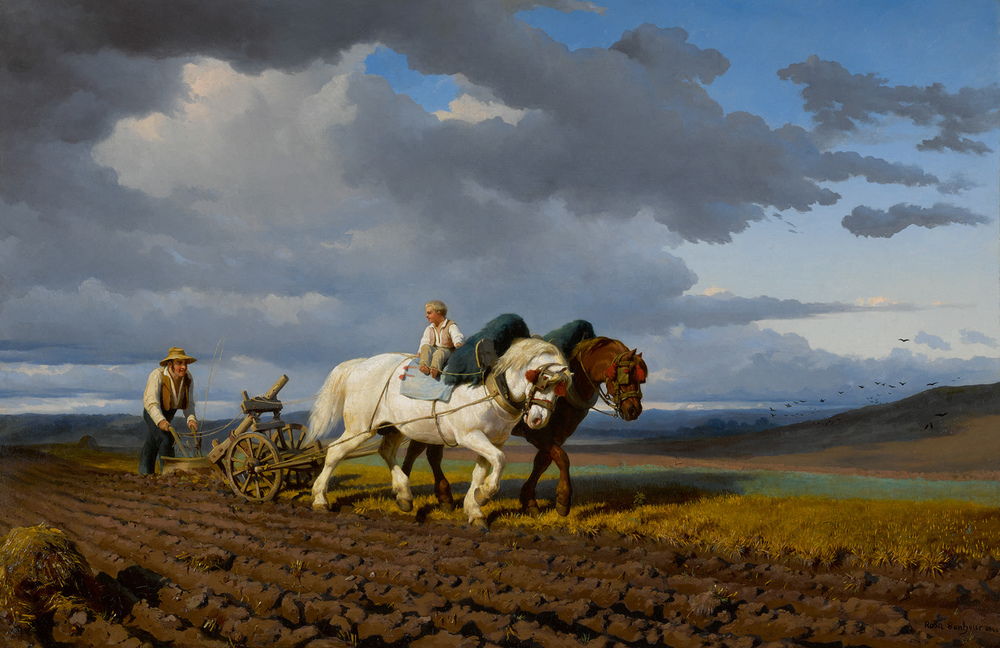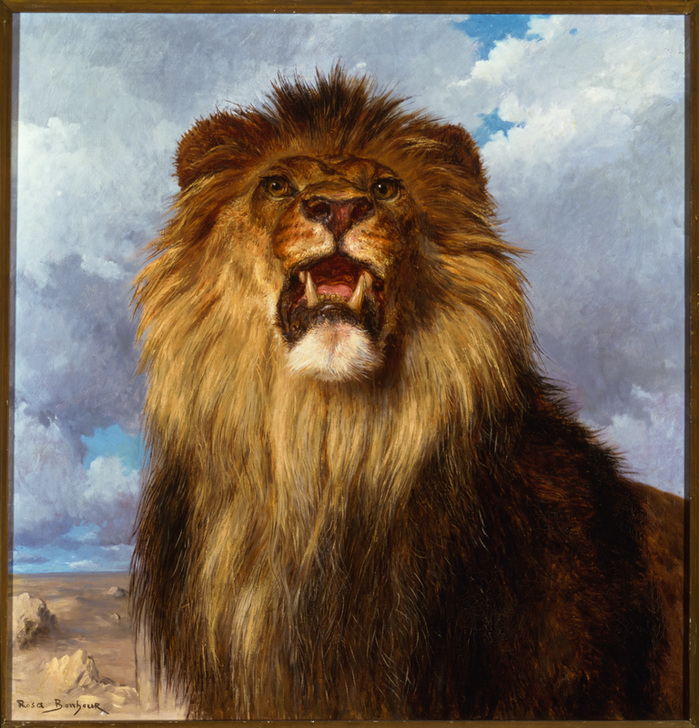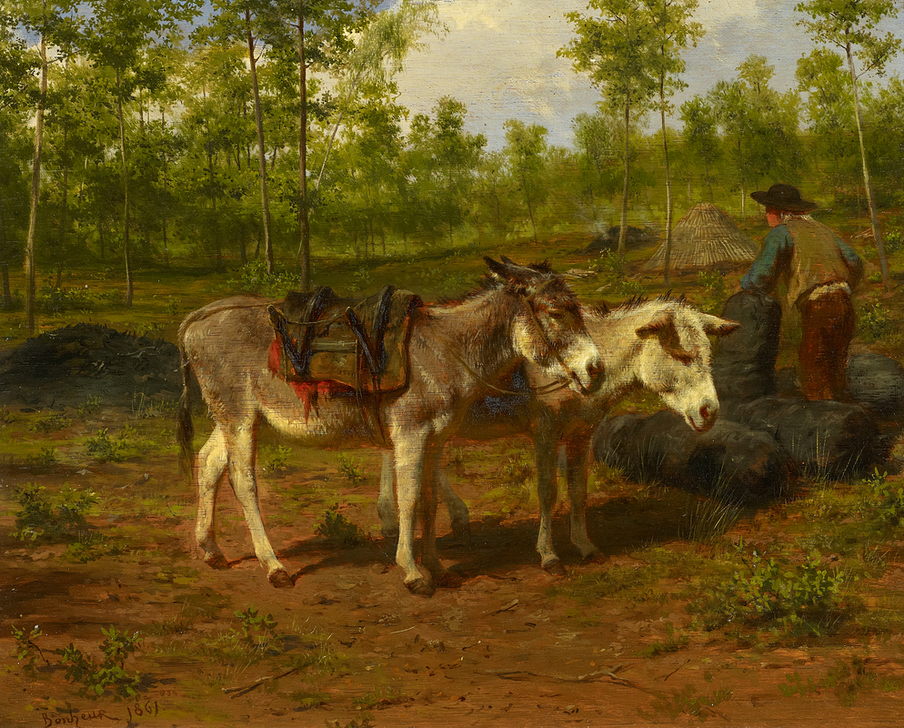Rosa Bonheur
200th anniversary of her birth
10 March 2022

Rosa Bonheur (16 March 1822 – 25 May 1899) was a French painter and sculptor famed for the remarkable accuracy and detail of her pictures featuring animals.
After a failed apprenticeship with a seamstress at the age of twelve, her father undertook her training as a painter. He allowed Rosa to pursue her interest in painting animals by bringing live animals to the family's studio for studying. She began studying animal motion and forms on farms, in stockyards, and at animal markets, horse fairs, and slaughterhouses, observing and sketching them and gaining an understanding of animal anatomy.
Women were often only reluctantly educated as artists in Bonheur's day, and by becoming such a successful artist she helped to open doors to the women artists that followed her. Bonheur was known for wearing men's clothing, but she attributed her choice of trousers to their practicality for working with animals. In her romantic life, she was fairly openly a lesbian; she lived with her first partner, Nathalie Micas, for over 40 years until Micas' death. Bonheur's choice of clothing also broadcast her sexuality at a time when the lesbian stereotype consisted of women who cut their hair short, wore pants, and chain-smoked. Rosa Bonheur did all three. Bonheur, while taking pleasure in activities usually reserved for men at the time (such as hunting and smoking), viewed her womanhood as something far superior to anything a man could offer or experience. She viewed men as intellectually inferior and mentioned that the only males she had time or attention for were the bulls she painted.
Bonheur made a number of sketching trips to such regions as Auvergne and the Pyrenees, as well as to London, Birmingham, and Scotland. Her work rapidly gained popularity in the United States and Britain. The Horse Fair (1853), considered by many to be her masterpiece, was acquired in 1887 by Cornelius Vanderbilt for a record sum and became one of her most widely reproduced works; Vanderbilt donated the piece to the Metropolitan Museum of Art in New York City. Bonheur’s work sold so well that in 1860 she was able to purchase an estate with a château near Fontainebleau. She was the first woman to be awarded the Grand Cross of the Legion of Honour (1865). In the 1870s she began to study and sketch lions and to master the characteristics of their movement as she had horses and many other animals; as an aid to her observation and in appreciation of their spirit, she even raised some lions on her estate.
Bonheur’s companion, Nathalie Micas, died in 1889. Later that year Bonheur met a young American painter, Anna Klumpke, with whom she corresponded for many years. Klumpke eventually travelled to France to paint Bonheur’s portrait, and the two artists remained together until Bonheur’s death in 1899.
See more images here




